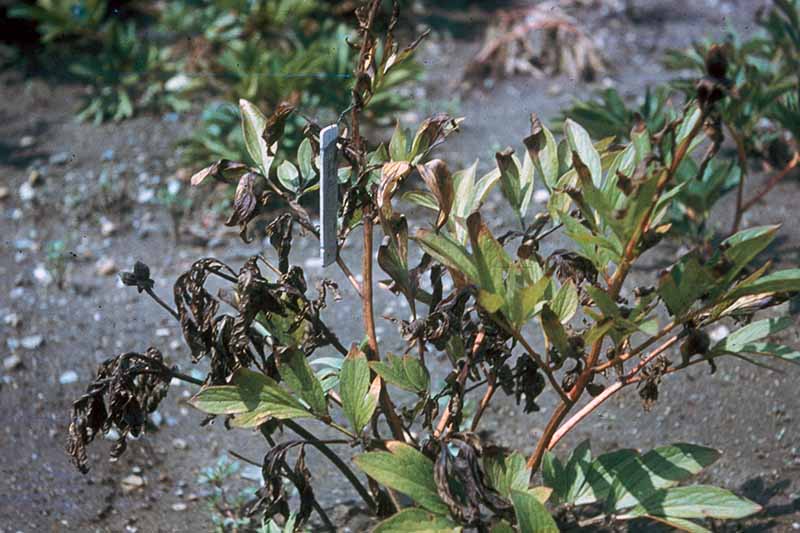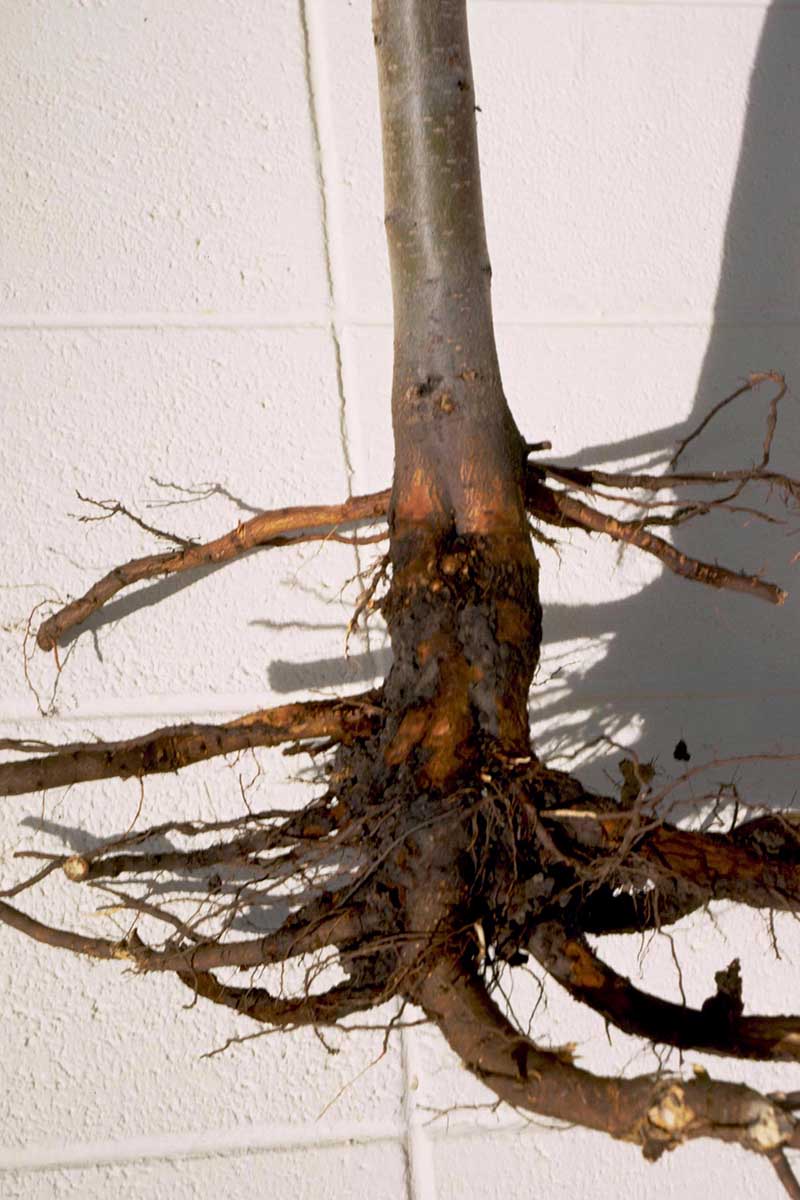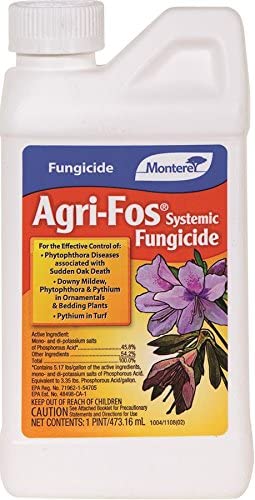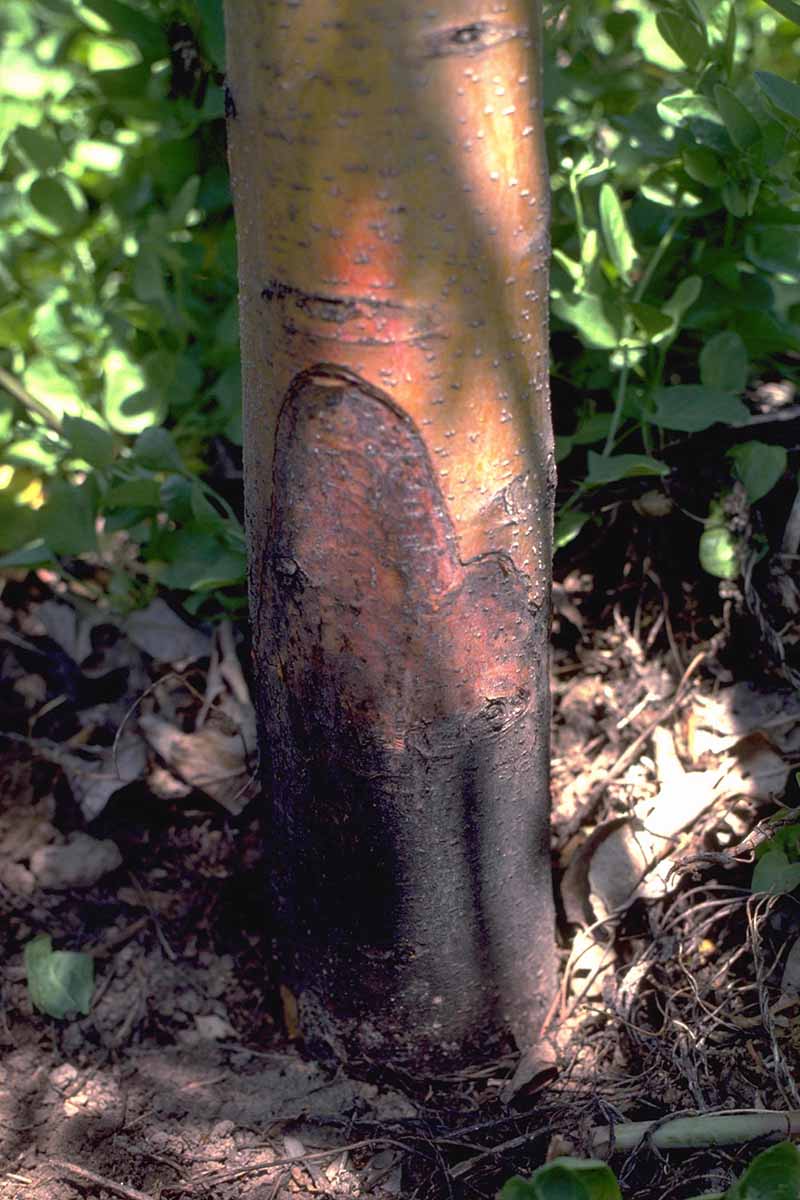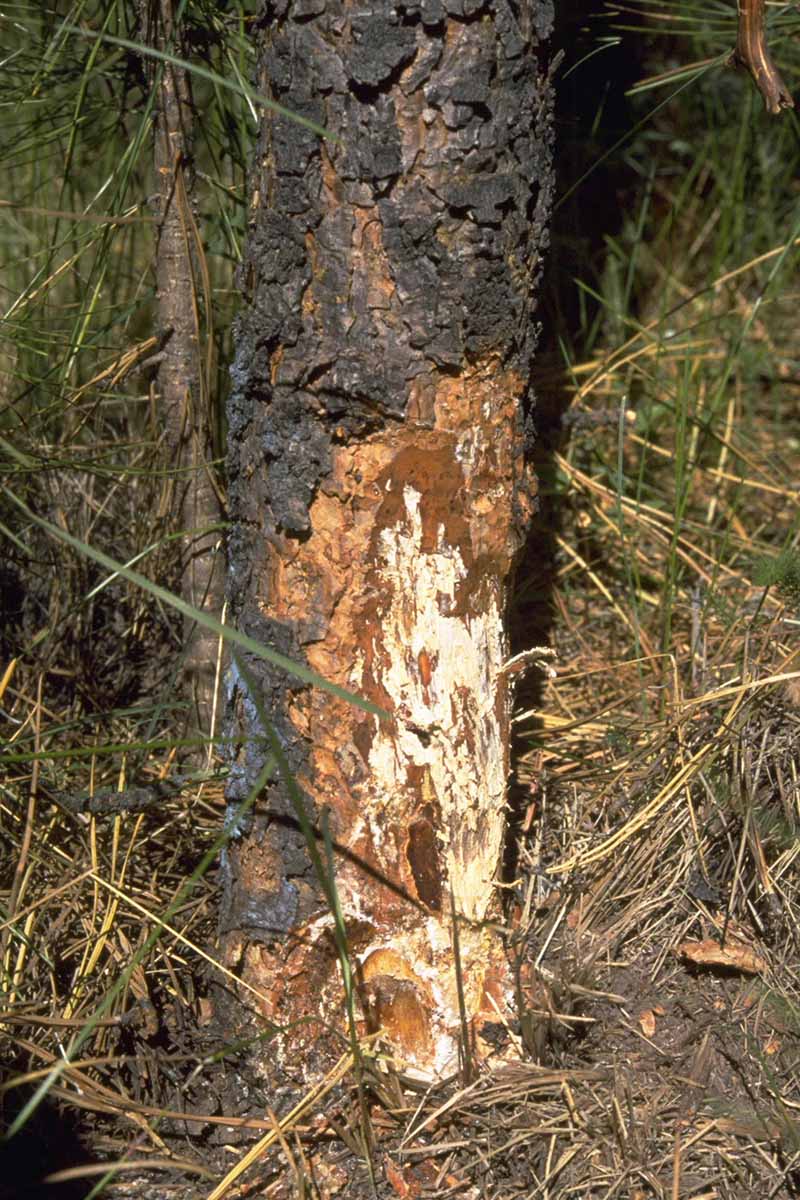While there can be other causes for the collapse, crown rot is a common culprit. As I’m sure you know, fungi and water molds run rampant in the soil, and disease-causing pathogens can get the upper hand (or leaf). This is particularly true if your soil is moist for a long period of time. We link to vendors to help you find relevant products. If you buy from one of our links, we may earn a commission. Many different types of fungi can cause crown rot, and it can be hard to tell them apart. It can also be difficult to separate crown rot from root rot, since both of these diseases can cause similar symptoms. Since crown rot is typically fatal, prevention is your best bet. In this guide, we will cover the major culprits that cause this disease and how to prevent it.
What Is the Crown of a Plant?
You are undoubtedly used to admiring flowers, fruits, and leaves. But perhaps you have never considered the crown. What is it? And where does it reside? Simply put, this is the part of the plant where the stem meets the roots. In trees, it is considered to be the lower section of the trunk that is just below the soil line. The crown is a critical part of the plant, because this is where the nutrients from the roots are transferred to the upper, aboveground part. Now that you know where these diseases are focused, let’s get into the details.
Crown Rot in Herbaceous Plants
In herbaceous plants, a common feature of crown rot is that they will look like they are suffering from drought. The leaves may wilt or turn yellow, dull green, red, or purple. But what is the cause? Keep reading to find out.
Fusarium
Cool weather favors the development of crown rot from Fusarium fungi. You may recognize the name Fusarium if you have read about wilts before. This group of fungi is highly versatile, and can cause an array of diseases. A number of types of the species Fusarium oxysporum are specialized for different plants. For example, the fungus that causes Fusarium crown rot on tomatoes and other solanaceous plants is known as F. oxysporum f. sp. radicis-lycopersici (and lycopersicum is the species name of tomatoes). As you can probably guess, F. oxysporum f. sp. asparagi causes disease on asparagus. F. proliferatum is another common type of Fusarium that causes crown rot. Unfortunately, these fungi are ubiquitous. What exactly do I mean by that? They are everywhere, and it’s difficult to avoid them. This may not be the case in every garden, but they are found in most field soils and can survive indefinitely, thanks to their thick-walled spores. And they are a menace in greenhouses! Airborne spores that can spread rapidly are formed under such humid conditions. The initial symptoms of this disease are the same as what you will see for most crown rots: lower leaves that turn yellow and drop prematurely, followed by wilting and the eventual death of the plants. However, in the case of Fusarium, if you look just above the soil line, you will find dark brown lesions that encircle the stem. If you cut it open, you will find reddish or brown discoloration. On tomatoes, these lesions are typically limited to areas four to 12 inches above the soil line. The roots of infected plants are likely to be rotted and discolored. This type of crown rot is dry rather than causing mushy symptoms like that of southern blight, which we will discuss below. Plants that survive may struggle along, stunted and wilted, for a few years before succumbing. It is difficult to manage Fusarium crown and root rot, and fungicides won’t help much. Your best bet is to try and contain the disease. Planting transplants that are free of disease is about the only recommendation to prevent this type of crown rot. And if you are growing plants in a greenhouse, use steamed soil that has been sterilized. Resistant varieties are available for some plants, such as asparagus.
Phytophthora
While this organism is no longer considered a fungus, it is highly destructive. “There’s a water mold among us” doesn’t come with quite the same sense of dread, but it should. Hundreds of species of Phytophthora are found throughout the world – in fields and in forests. They are such a menace that their name means “plant destroyer.” Who said early mycologists didn’t have a flair for the dramatic? Tomatoes, eggplant, and other crops are prone to crown rot caused by these organisms, which are also known as oomycetes. This disease is prevalent in wet soils – hence the name “water molds.” Unlike many other pathogens, they do not require a wound in the plant to cause infection. They can also attack seedlings, resulting in damping off. Older plants lose their vigor, and may collapse and die. They will typically have discolored roots with chocolate brown lesions that can extend into the lower stem. Minimizing the amount of moisture in the soil is the best way to prevent Phytophthora crown rots. You can do this by providing good soil drainage before you plant. If you have heavy soil, incorporate compost or leaf litter into it. Try to maximize drainage one to two feet deep for bedding plants. This can prevent roots from being oversaturated for the four to eight hours of exposure that are required for infection. Raised beds are an excellent option that is available to you to ensure good drainage. Also, group plants based on their need for water. For example, strawberries should be watered frequently and lightly, while tomatoes and melons require less frequent, deeper watering. Plants with different water requirements should not be grown together.
Southern Blight
Your first indication of southern blight, caused by Sclerotium rolfsii fungi, may be when the lower leaves of your plants start to turn yellow. Then they will turn brown, before wilting back to the base of the leaves. Because this pathogen is not a fungus, most traditional fungicides will not affect it. Monterey Agri-Fos Disease Control Fungicide While this kind of treatment can help to protect your plants, it is not a cure-all. You will need to use it in combination with cultural methods. If you look more closely, you will see water-soaked lesions on the stem near the soil line. In other words, the stems will turn brown and look mushy. With the stems gone, the leaves start to collapse. If it’s really humid and hot, around 86-95°F, the pathogens will grow on the stem and even the ground. The symptoms of this are fungal threads that look like a white cottony mass. That is a dead giveaway that your plants have southern blight – a pernicious, long-lived soil fungus that can infect species from more than 500 genera of plants! Vegetables, ornamentals, and trees alike can fall victim to this fungus. See our article on southern blight on tomatoes for details of its effect on these nightshades. Another classic sign of the presence of this fungus is the resting spores called sclerotia may be visible on the ground or at the base of the plant. These look like mustard seeds, and if the infection is well entrenched, they can form a crust on the soil. Southern blight was once considered a disease of the South because of its tendency to strike in hot and humid weather. However, it now afflicts gardeners as far north as the upper Midwest. There is not much hope for infected plants, but you can localize the disease to keep it under control. First, quarantine the infected area! It is really easy to spread this disease from one part of your garden to another. All it takes is one little sclerotium on some dirt on your shoe to start an infestation in another area. Be careful not to spread any plant material or soil outside of the quarantined area. Thoroughly wash your tools and shoes, and disinfect your tools with a 10 percent bleach solution. Be careful to put the water back in the area with the infestation, since any soil in the water can spread the disease elsewhere if you’re not careful. Since the fungus readily grows through moist soil, wet mulch can be the perfect environment for it to proliferate. Move any mulch that is in place around your unaffected plants several inches back from the base of each.
Crown Rot in Trees and Shrubs
You know the feeling of dread that comes over you when you find a problem with a prized perennial? Now think of that feeling magnified when one (or more) of your trees start showing symptoms of crown rot! Not a good feeling, but fortunately there’s help available. As with ornamentals, prevention is key. Do whatever you can to ensure that the soil around your tree or woody shrub is not waterlogged. Add organic matter to the soil before planting to improve drainage. Another positive result of adding organic matter is an increase in the number of beneficial microbes present that can help to fight off disease! Limit the amount of mulch that you use. Do not add more than a three-inch layer of it. Most importantly, be sure to keep the mulch from contacting the base of trunks and stems. Do not grow grass up to the trunk of your trees. Some sources recommend planting your trees on a mound to help protect against waterlogged soils, which can sometimes help to prevent disease. And finally, be careful not to injure your tree or shrub with a lawn mower or weed whacker, since such injuries can provide the perfect entryway for crown and root rot pathogens. To diagnose the cause, the first step is to determine whether your tree is suffering from crown rot, or just root rot on its own. The two often go together, since root rots can morph into crown rots. As with herbaceous plants, your tree may appear to be drought stressed or have nutritional stress issues. Some or all of the branches may wilt. However, if you look at the crown of the tree below the soil line, and you find discoloration beneath the bark, that is a strong indication of a crown rot infection. Since the symptoms caused by different pathogens are often similar, figuring out the specific culprit may not be trivial. And since the fate of your tree may rest on knowing what exactly is wrong with it, you would be well advised to get a professional diagnosis. One good source is your county extension agent. Knowing what to look for going in will help you to obtain an accurate diagnosis.
Armillaria
Let’s start with one of the most intractable causes of crown rot. It is also one of the easiest to diagnose. Armillaria is a genus of fungi that are widely distributed around the world. And when I say widely, I mean that literally. Colonies of these fungi can be thousands of years old and spread for miles. In fact, a colony of Armillaria in Oregon is considered the largest known organism in the world. What does that have to do with your tree? Quite a bit, actually. This pernicious and widespread fungus can survive in roots and bits of wood in the soil, ready to strike as soon as it finds a susceptible tree or shrub. Armillaria infections have some striking symptoms that help in its diagnosis. First, it is evidenced by fan-shaped fungal threads (mycelia) under the bark. This fungus produces characteristic dark brown threads called rhizomorphs under the bark and in the soil that look like shoestrings. In fact, it is sometimes called the shoestring fungus. While it doesn’t always happen, the fungus tends to produce mushrooms at the base of infected trees and shrubs in the fall and winter, known commonly as honey mushrooms. As the disease progresses, dark cankers form on the larger stems and branches. Often, these cankers will ooze gum – a condition called gummosis. Unfortunately, Armillaria is exceptionally resistant to fungicides and very difficult to treat. If you are able to identify an infection early, you can try digging a trench around the tree and removing the soil as described in our article on Armillaria.
Phytophthora
As with Armillaria, Phytophthora is widespread in soils. If your tree contracts crown or root rot caused by this water mold, your other trees are in peril. However, this disease is difficult to diagnose and may require a lab test. One trick you can use is to dig at the base of the tree, peel off some bark from the trunk below the soil line, and check its color. While it would normally be green, Phytophthora infections can cause it to turn orange or brown. Also, this organism first infects plants at the crown and moves down toward the roots, whereas Armillaria starts at the roots and grows upwards. One of the reasons why I stress the need for an accurate diagnosis is that Phytophthora will colonize the soil for many years in severe cases. If this happens, you may have to avoid planting fruit trees in that location. However, you might be able to save your tree if you catch the infection early. Phytophthora is susceptible to a few types of fungicides, including metalaxyl. Be sure to treat the whole root zone, not just areas near the trunk.
Southern Blight
The only good thing about this fungus is that it can’t infect older trees, because their bark is too thick. A classic symptom is the same as what you will see with herbaceous plants, a white cottony layer on the trunk. This is composed of mycelia, or fungal threads. Also, your tree will wilt, and it will have yellow leaves that remain attached to the plant. There are no chemical treatments available currently for dealing with such infections. Unfortunately, your tree will probably not survive southern blight. See our article on southern blight of apples for more information. Since this collection of diseases are frequently fatal, focus on preventing infection – or limiting the spread from infected plants. Try to maximize drainage before planting, especially for trees. If you do have infected plants, be very careful not to spread soil from one part of your garden to another, since that can spread the disease pathogens. Have you fought a battle with crown rot? If so, tell us how it went in the comments section below. And for more information about common plant diseases, check out these articles next:
Understanding and Avoiding Black Smut FungusWhat’s the Difference Between Tree Burr Knots (Burl) and Crown Galls?What Is Citrus Greening Disease?

